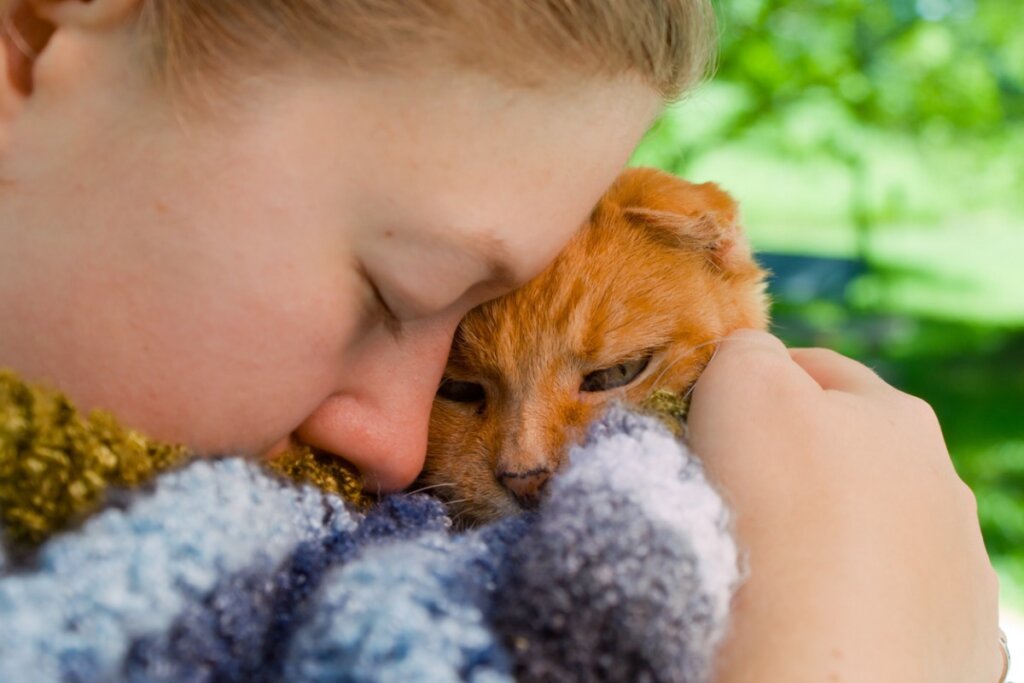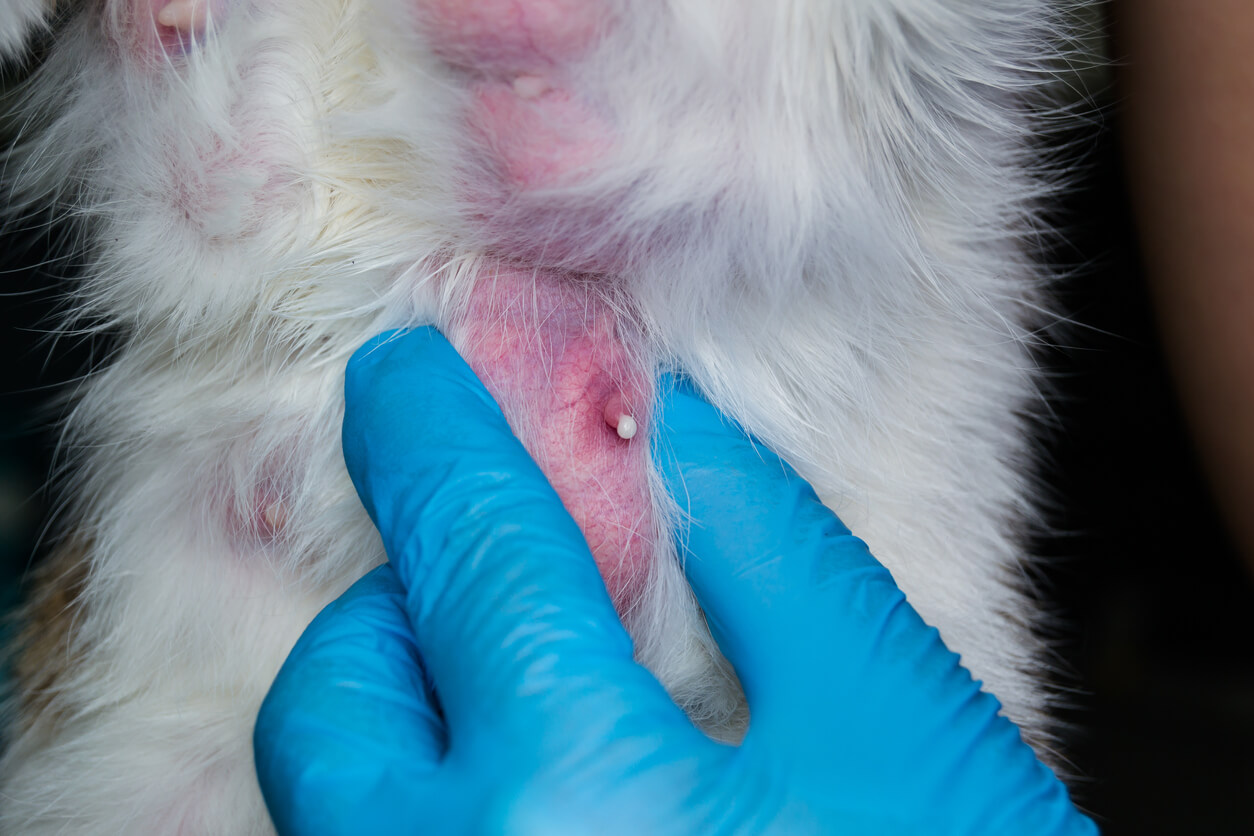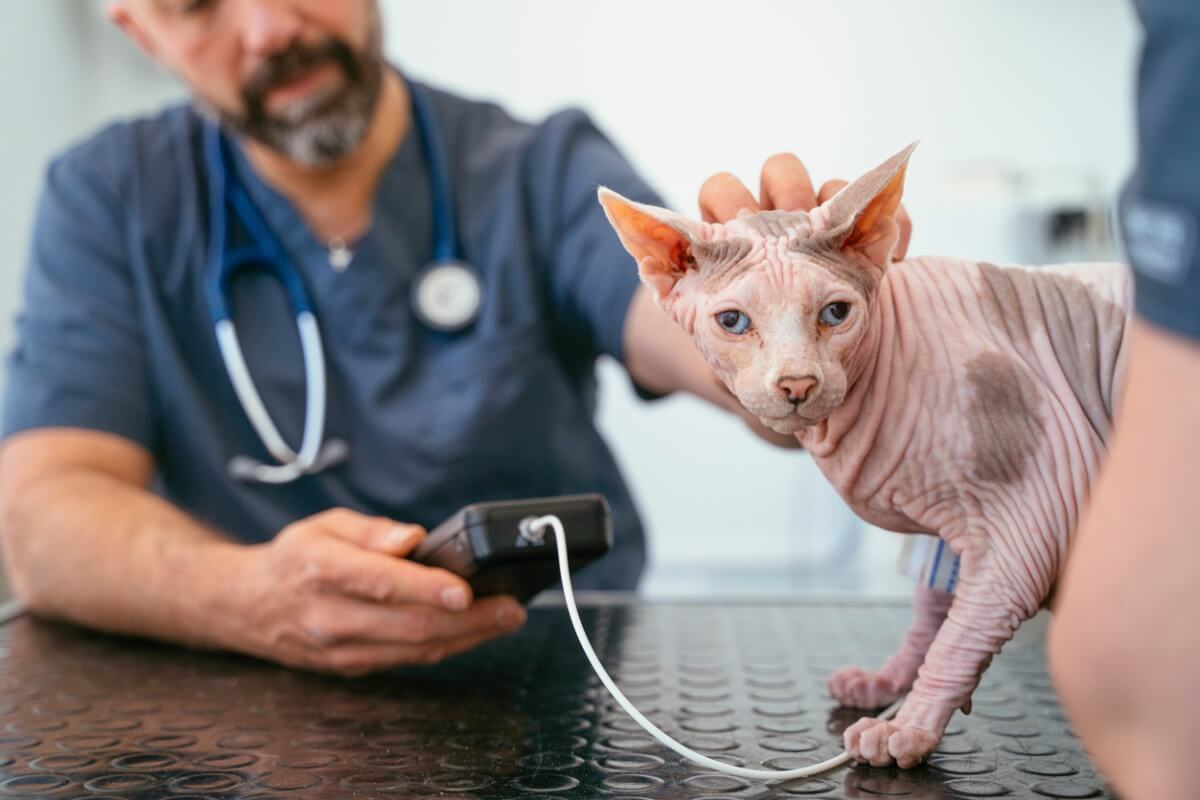7 Deadly Diseases in Cats

As much as we try not to think about it, it’s a fact of life that our pets are finite. Some animals live longer than others by nature, while specimens of the same species often show disparity in their longevity due to genetic predisposition. These deadly diseases in cats are governed by this premise, as they’re quite dependent on each breed.
The average life expectancy of a feline is between 13 and 17 years old, although some reach 20. Here are the 7 diseases that can end the life of your pet (and how to detect them in time). Don’t miss it!
1. Cancer
The term “cancer” encompasses a heterogeneous group of diseases, but they all have something in common. In these pathologies, a group of cells grows more than it should due to mutations in its genome. As the cell line divides rampantly, a tumor is produced that can spread to other parts of the body (metastasize).
As indicated by the Flint Animal Cancer Center, 1 in 5 cats will develop some type of cancer throughout their life, especially in their senior stage. Here are the most deadly and common malignancies in these pets.
1.1 Lymphoma
Lymphoma is the most common type of cancer in cats, affecting 48 out of 100,000 felines in their lifetime. In this malignant neoplasm, excessive proliferation occurs in lymphocytes. These are blood cells that usually protect the feline from infections.
This type of cancer occurs in various forms depending on its location and etiology. Up to 75% of cats go into remission with appropriate treatment, but the average life expectancy is 6 months, as they tend to relapse very quickly. Therefore, it’s one of the most relevant fatal diseases in cats.
1.2 Breast cancer
Contrary to what happens in dogs, 90% of mammary tumors in cats are neoplastic (carcinogenic). These appear as lumps or nodules on or under one of the breasts and can spread rapidly to other tissues and to nearby lymph nodes. The life expectancy 1 year after diagnosis is 31.8%, and 17.7% live 2 years.
This cancer can be prevented by removing the cat’s ovaries by neutering.

1.3 Squamous cell carcinoma
Squamous cell carcinoma accounts for up to 48% of skin cancers reported in cats. It usually appears as a nodule in poorly pigmented superficial areas, such as the edge of the nose, eyelids, ears, and lips. The survival rate 1 year after diagnosis is less than 10%, even applying radiotherapy and chemotherapy on time.
Cancer in cats often has a fatal prognosis even with proper treatment.
2. Rabies
According to professional sources, rabies is reported more in cats than in any other domestic animal in the United States. Being curious and predatory animals by nature, they can easily get into fights and end up getting bitten by some of the typical vectors of the disease (such as rodents, bats, and other wild mammals).
The rabies virus is lethal in all cases and the animal usually dies within 7 days at most once the causative virus reaches the brain and begins to manifest itself symptomatically. The animal becomes aggressive, loses muscle control, goes into a coma, and finally dies. The mortality rate is almost 100%.
3. Feline panleukopenia
This is one of the most common deadly diseases in cats. It’s caused by an environmentally resistant DNA parvovirus that “hijacks” highly dividing cells, such as those found in the intestine, lymphoid tissues, and bone marrow. One of its biggest problems is its endurance, as it can remain viable for up to 1 year outside its host.
Some of the most common symptoms in infected cats are high fever, depression, diarrhea, jaundice (yellowing of the sclera and tissues), and marked dehydration. Its fatality rate is estimated at 50%, especially in immunosuppressed cats or those with poor general health.
4. Kidney failure
Kidney failure is one of the leading causes of death in cats, especially in seniors. In addition, it’s one of the pathologies that irreversibly degrades the kidneys little by little, and is typical of one of the most sought-after breeds on the market: the Persian.
Polycystic kidney disease (PKD) is an inherited disorder in this breed from birth. Little by little, the affected specimens develop cysts (fluid-filled bags) in the kidneys. At first, they’re very small, but little by little they destroy the tissue of each kidney and make it dysfunctional. 1 in 3 Persians are affected by the condition.
Fortunately, this pathology progresses slowly and only becomes evident when the cat is older.
5. Feline immunodeficiency virus (FIV)
The feline immunodeficiency virus is the cause of AIDS in this species. The lentivirus that causes the condition enters the lymphocytes and other immune cells and destroys them little by little, thus causing your cat’s biological barriers to weaken over time. Ultimately, the animal dies from aggravated opportunistic infections, not from the virus itself.
Although it’s an unknown pathogen, it’s estimated that it affects 2.5 to 4.4% of all domestic cats in the world. Life expectancy after diagnosis is about 5 years (it’s a very slow progressive infection), but it all depends on the causative strain and the cat’s previous state of health.

In this article, we’ve shown you 7 deadly diseases in cats, 3 of them carcinogenic, one of genetic origin, and the rest of a viral nature. Cancers are usually the most problematic, as their prevalence is much higher than the rest. As we’ve said, up to 1 in 5 felines have cancer at some point.
All cited sources were thoroughly reviewed by our team to ensure their quality, reliability, currency, and validity. The bibliography of this article was considered reliable and of academic or scientific accuracy.
- Bunn, T. O. (2017). Cat rabies. In The natural history of rabies (pp. 379-387). Routledge.
- Codreanu, M. D. (2004). Clinical, hematological, biochemical and ultrasonographic changes in Polycystic Kidney Disease (PKD) in cat.
- Cannon, C. M. (2015). Cats, cancer and comparative oncology. Veterinary sciences, 2(3), 111-126.
